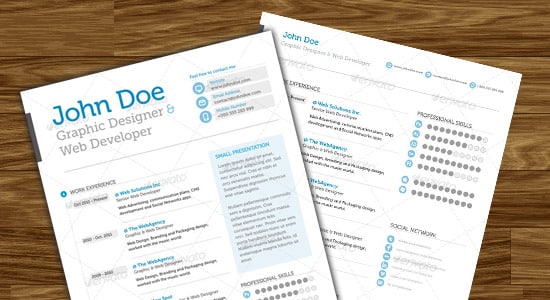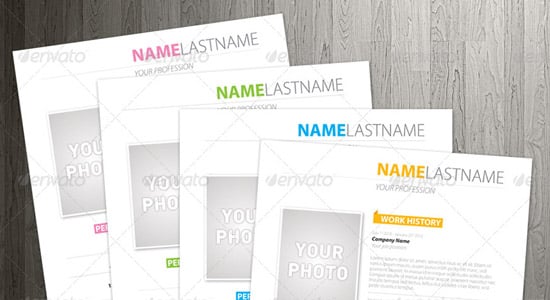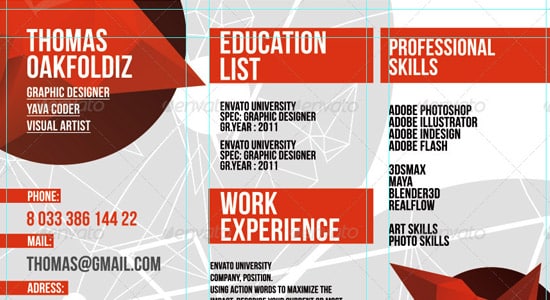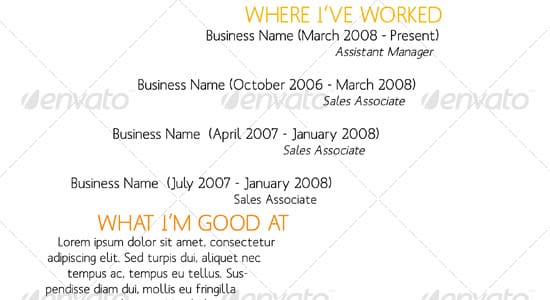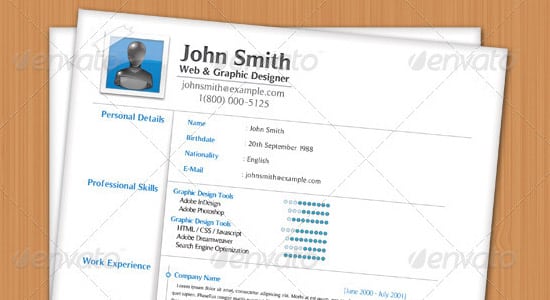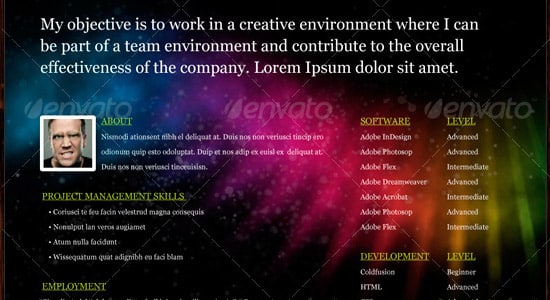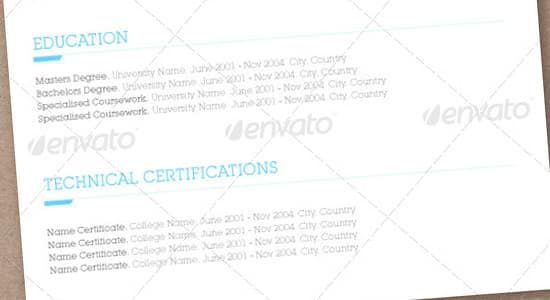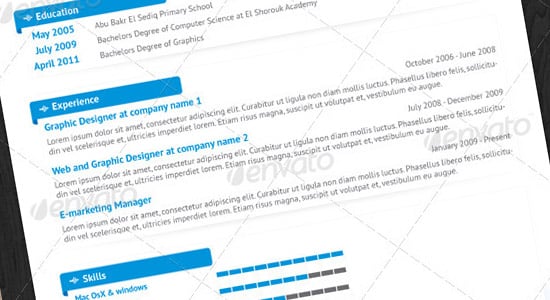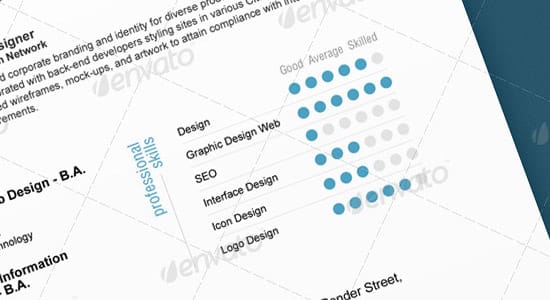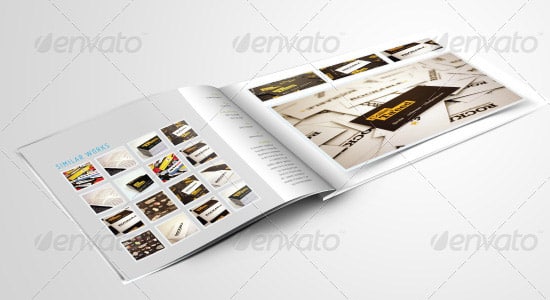10 Tips on Creating a Successful Design Resume
In this article I’ll be going through some important tips on how to create a successful graphic design & web design resume to help you land your dream job. We’ll be going through the importance of layout structures, typography, resume details and more!
Layout Structure
Having a resume that’s structured correctly is very important. You want your resume to be easy to look through, and not be confusing. Having an effective layout, that’s unqiue, fresh and a breeze to look at will get you points when applying for the dream design job!
Experiment with various grids in order to design something that helps define you as a person to the reader. Avoid using Word to create your resume and choose InDesign as you’ll be able to experiment easily with various layout structures.
Colour Scheme
Choosing the right colour scheme is crucial when designing your resume. Keep the colours fairly calm and simplistic, staying away from too many bold & over-complicated colour schemes which will deter the reader immediately. Choose colours which help reflect your personality as a designer. A good idea is to go with positive, happy, but also professional looking, colours. Pastel colours often attract the eye, and can also be calming.
Design
The design of your resume should attract the attention of the reader, rather than just look like all the others being considered. Design something that’s eye-catching & fun, and which shows your personality. While designing keep in mind not to have the resume looking too complex – keep it fairly simple & minimalist in terms of decorations and special effects.
Typography
Having readable font is of course the number one priority of any resume. For your content choose professional looking fonts like Arial, Trebuchet & Tahoma. For headings and titles, you can select a more unique font that fits your personality, DaFont.com is a great website with loads of fonts to choose from. The size of your text is also important. Keep the text clear, professional and easy to read.
Images
It is recommended to use as few images as possible. You want the focus to be on your resume rather than distracted by the images. If you want to place in visuals, go with a professional looking photograph of yourself in your personal details section and keep it simple. Your portfolio will speak for itself.
Personal Details
Write out some personal information about yourself, including your name, contact and social networking details and maybe a personal statement of what your goals and objectives are regarding your design career and what you want to accomplish.
Education Details
Next write out your education details. These should include your high school, college, date of graduation, your degree and major subjects, and any short courses you may have completed.
Work History
Write out your work history next. Include your job title, role, duties and area of responsibility, and what you achieved with the work you were required to do. It’s best to also put in any freelance work you may have completed in order to bulk up your work history – remember to place a little note letting the reader know it was a freelance job.
Software Skills
Make sure to provide information on how good you are with certain software and/or coding skills that relate to the job you’re applying for. Give a detailed description of your capabilities as this is what your prospective employer will be interested in.
Extra Content + Updates
Place in any extra content – eg. awards, your personal hobbies and Interests and references who can be contacted regarding your work.
It’s important that you regularly update your resume. If you create your resume in a difficult program, it will be a nuisance to update and you’ll leave it untouched. When employers see a updated resume, they’ll see that you are passionate about your field.
Quick Tips to Remember:
- Do spelling checks on your resume before sending it
- Show others to get their opinion
- Make sure you have your resume in Print Ready & Digital Format
